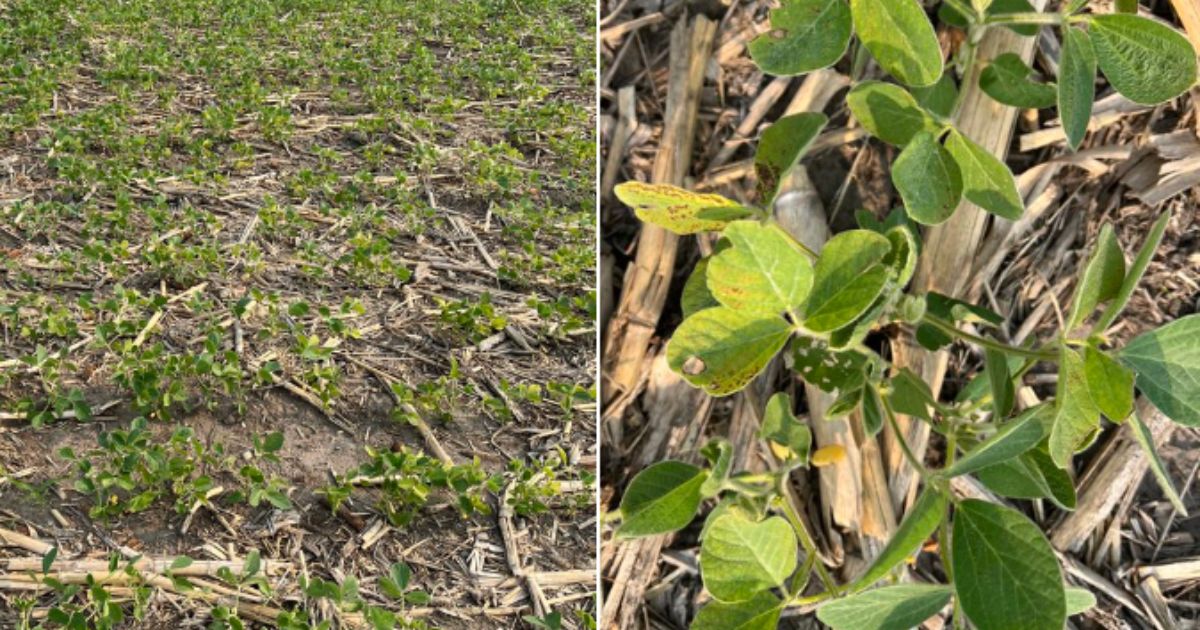From America’s heartland comes word that a drought is threatening most of one of America’s major food-producing states.
On Saturday, Republican Sen. Chuck Grassley of Iowa, which historically leads the nation in corn production, shared on Twitter the woeful condition of one field used previously to grow corn.
It appears a planting of soybeans has been rotated in among the remaining stalks of last year’s harvest, but the new crop already seems to be suffering from a serious problem.
“We need rain The no till bean in last yrs corn stover is beginning to look like bean field However if u observe a bean plant up close u c colorations that results fr drought. 95 of our99 counties r in some stage of drought,” Grassley, 89, tweeted in his usual style, which he commented upon in one interview by saying, “I love Tweeting, but I don’t like to type. So, I probably type and hit send a little too quickly.”
We need rain The no till bean in last yrs corn stover is beginning to look like bean field However if u observe a bean plant up close u c colorations that results fr drought. 95 of our99 counties r in some stage of drought #soybeanwatch pic.twitter.com/Shk5V8fZHx
— Chuck Grassley (@ChuckGrassley) June 17, 2023
But there was nothing to joke about in the conditions hitting Iowa.
As reported by KCCI-TV, at least one part of the state has been under a drought warning since 2020.
The current Drought Monitor, released this week, shows large areas of northern and central Iowa rated as “abnormally dry,” with one section of western Iowa rated an extreme drought. Most of the state is rated in a moderate drought, with scattered places in a severe drought.
#Drought Monitor, #Iowa pic.twitter.com/0QxGRTeS9U
— FarmPolicy (@FarmPolicy) June 16, 2023
Only parts of four counties along Iowa’s northern border are exempt from drought conditions.
Iowa has suffered through its 14th-driest spring on record, according to the Iowa Capital Dispatch.
It reported that parts of Iowa have suffered through rainfall deficits of up to four inches.
“Those are areas with sub or below 5% of normal rainfall,” said Aaron Wilson, the state climatologist for Ohio who gave a recent presentation on Midwestern drought conditions.
“These are big, big deficits, especially for this time of the year.”
When I began as a farmer in 1960 corn shld b “knee high by the Fourth of July” because of genetics in last 25 years we expect corn to be shoulder high by the Fourth of July. 90% of Iowa is in drought. So if it doesn’t rain soon it won’t be shoulder high by the 4th #cornwatch pic.twitter.com/s9HSg3I4Ao
— Chuck Grassley (@ChuckGrassley) June 10, 2023
Mark Licht, of the Iowa State Department of Agronomy, said July will tell the tale for the state’s corn crop, according to KGAN-TV.
“If we have hot, dry weather during corn pollination, that will reduce the number of kernels that we have on an ear. If it stays dry after the corn is pollinated, then we are going to see impacts on kernel size,” he said.
Dennis Todey, USDA director of the Midwest Climate Hub, said this spring’s drought is not simply a one-shot problem, according to KGAN-TV.
“If this would have been two years ago, it wouldn’t have been as big of an issue,” he said. “Right now where we are on top of these multiple dry seasons, it’s really adding to the problem at this point.”
This article appeared originally on The Western Journal.

























 Continue with Google
Continue with Google